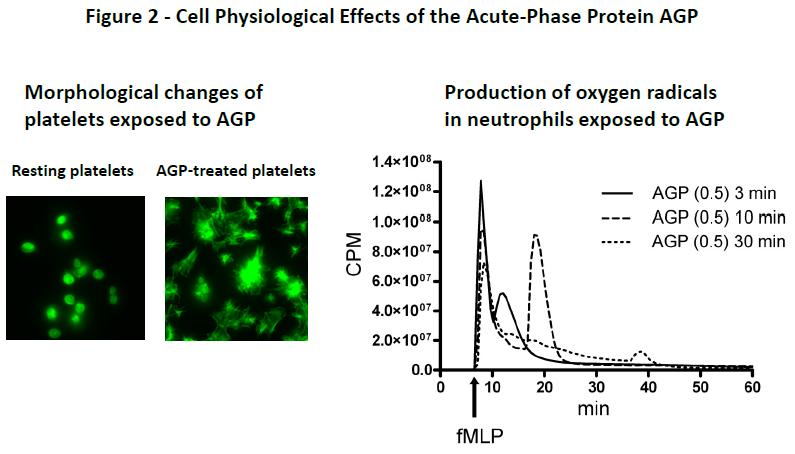Link between primary hemostasis and inflammation
About this project
Project information
The complex interplay between platelets and neutrophils has been thoroughly investigated in terms of mechanisms causing altered behaviour of the two cell types (Bengtsson et al., 1996). Furthermore, our research has revealed previous unknown mechanisms by which the acute-phase reactant alpha1-acid-glycoprotein modulates neutrophils and platelets responses (Fig 2).

Fig. 2Effects of AGP on platelets and neutrophils.The acute phase protein AGP causes pronounced shape change of human platelets (Gunnarsson et al 2009; key publication no 5). The small discoid platelets (top left; bodipy phallacidin staining of actin) become much larger and irregular after AGP stimulation (bottom left). This previously unknown effect of AGP disappears if lipids are removed from the protein (unpublished results). AGP provokes a second burst of reactive oxygen species (ROS) generation in the pre-activated neutrophils (luminol-dependent chemiluminescence detection of ROS, Gunnarsson et al 2010). This effect of AGP depends on terminal sialic acid residues on the carbohydrates of AGP and the neutrophil receptor Siglec-5 (Gunnarsson et al 2007; key publication no 7).
Link between primary hemostasis and inflammation
Another area of research is the ongoing evaluation of platelet as a highly “mitogenic” cell type. It is well established that platelets release a large number of soluble growth factors. However, we have shown that platelet membranes also possess pronounced pro-proliferative activity, which may involve interaction with extracellular matrix components such as hyaluronic acid.


